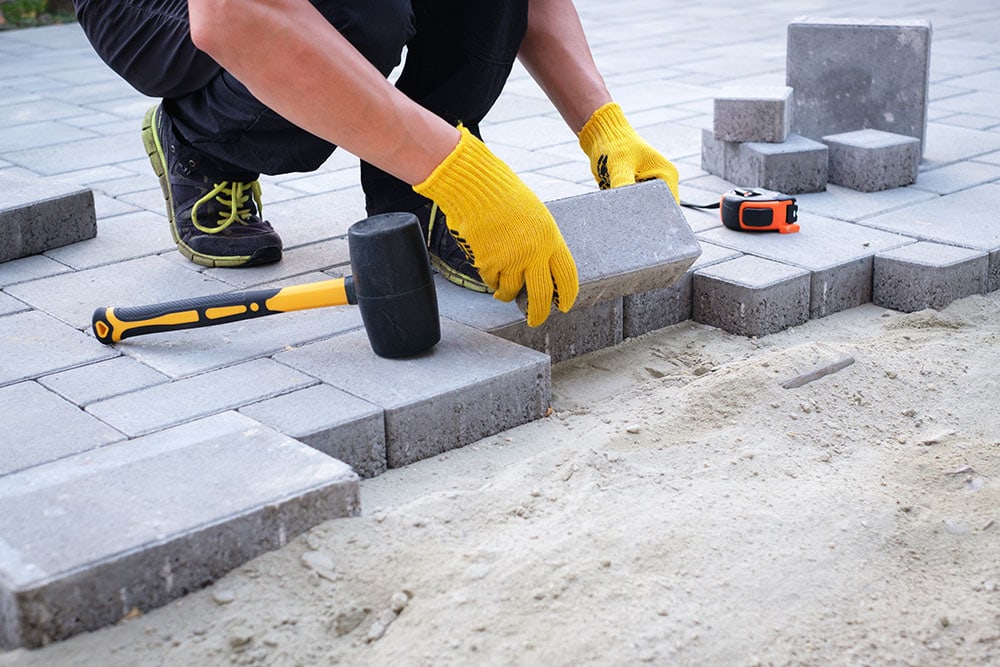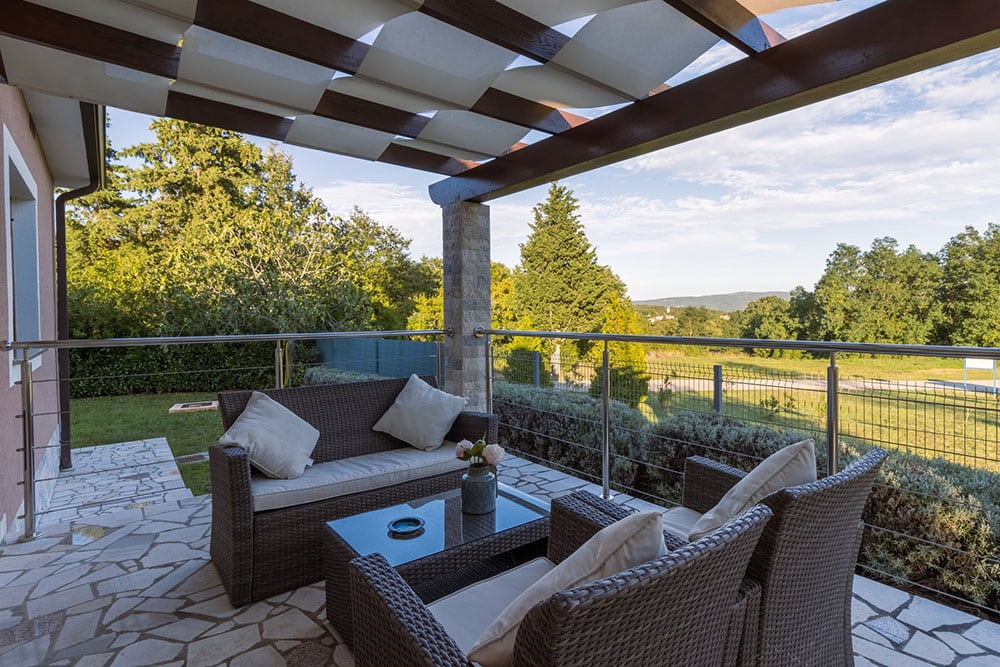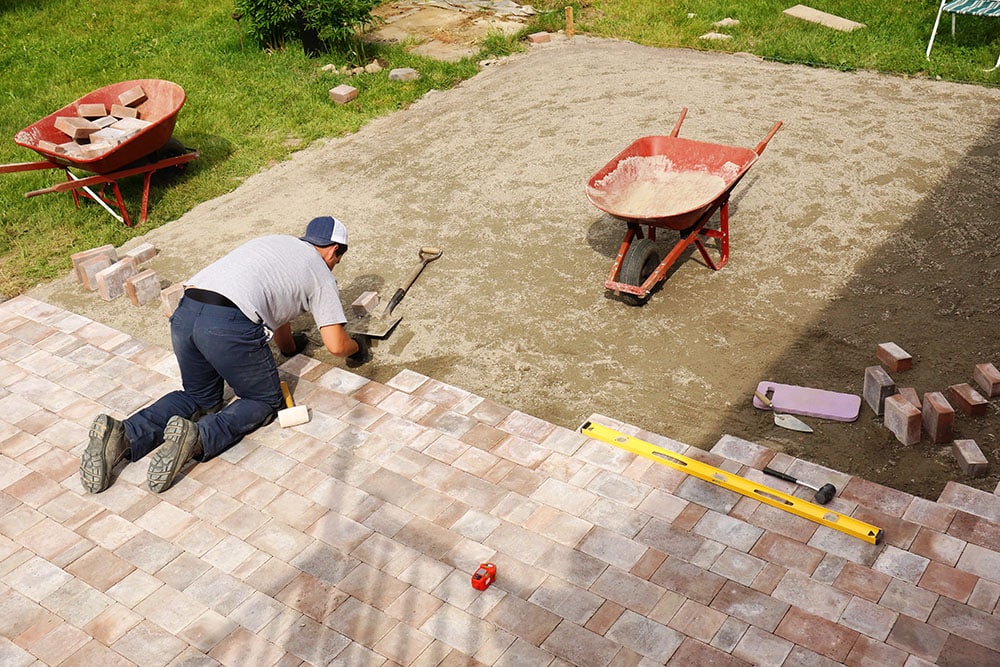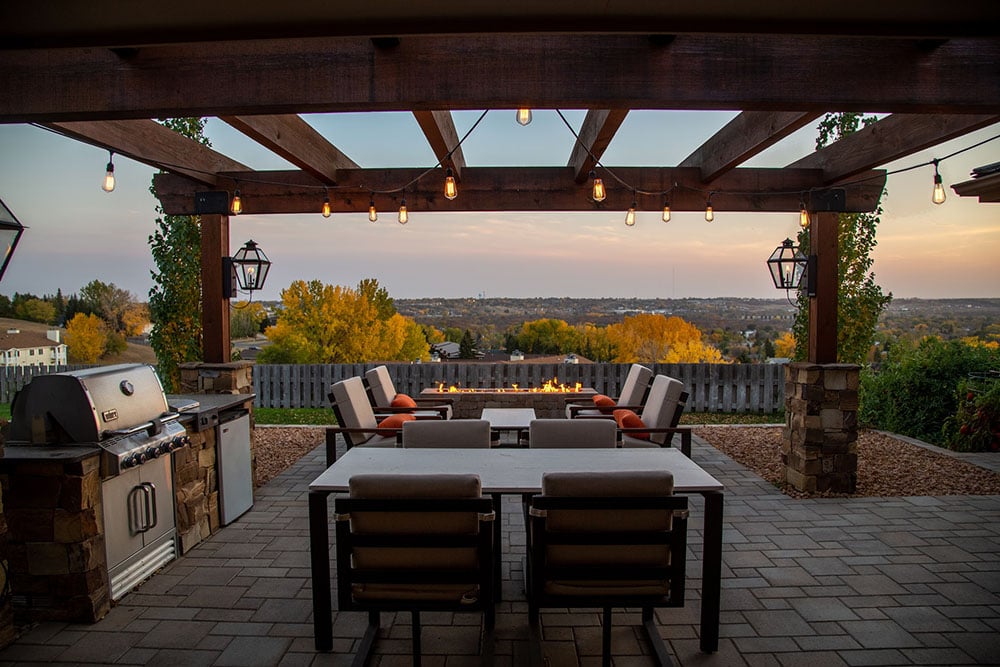How Much Does it Cost to Install Paver Patio? (2025 Update)
-

- Last updated:

By adding a paver patio to your garden you get a modern-looking surface with an elegant and sleek design. Due to the way they are installed, paver patios are effortless to maintain, and they have a drainage hole, so they are more environmentally friendly than other solutions.
Today, pavers come in various sizes, shapes, and styles, which give you a vast selection of design options. Read on below to find out the benefits of a paver patio and how much it would cost you to install one on your property.
Why Should You Install a Paver Patio?
Surfaces covered with pavers require minimal maintenance. In addition, in terms of design, durability, and strength, pavers provide a quality surface that surpasses many other solutions. Pavers are non-slip even when the surface is wet, so it is entirely safe for walking and driving.
In areas where snow is frequent, pavers prove to be a superior choice. Paver surfaces are resistant to significant temperature changes, even to the salt used to remove ice from asphalt and concrete. They are made with the highest quality cement, additives, and pigments, while the molds are made of high-quality plastic and metal to ensure the constancy of the shape of each paver. The result is a product much more substantial than ordinary poured concrete and more durable than asphalt. Surfaces made of pavers are flexible and allow spreading and bending without cracks on the surface.
When we add to all of this the low cost of maintenance and easy replacement of damaged plates, it’s easy to see why they are the ideal solution.

How Much Does Professional Installation of a Paver Patio Cost?
The installation cost of a paver patio depends on the material of the paver itself, its thickness, material quality, preparatory earthworks, labor costs, and additional costs such as various permits, inspections, and others. The labor itself can cost between $8 per square foot up to $25 per square foot.
There Are Several Types of Pavers:
- Brick pavers
- Concrete pavers (plain concrete pavers, interlocking concrete pavers, and permeable pavers)
- Natural Stone Pavers
These types differ in shape, thickness, material quality, and color. Permeable concrete pavers are suitable for parking places because they do not retain water.
Natural stone pavers can be made of various natural rocks, such as marble, granite, and other materials, and they can be a rectangular or irregular shape.
Installation procedures/material prices per square foot
Depending on the type of patio chosen, the installation procedure may differ, which we outline below:
| Procedure/material | Price |
| Excavation & Grading | $40 to $150 per hour |
| Labor (laying pavers) | $8 to $25 per square foot |
| Pavers (Regular brick) | $4 to $8 per square foot |
| Pavers (Tumbled granite brick) | $18 to $50 per square foot |
| Class II Road Base | $0.73 per square foot |
| Geotextile Fabric | $0.43 per square foot |
| Bedding Sand | $0.36 per square foot |
| Concrete | $1.33 per square foot |
| Joint sand | $0.12 per square foot |
Additional Costs to Anticipate
Additional costs may appear if you hire a professional, such as design consulting, project management, or landscape architecture. The expertise of these professionals can positively affect the quality of the project itself, but it also significantly increases the cost of the project.
The paver manufacturer could charge the contractor a fee for using their paving pallets.
A cleaning fee is usually a fixed fee for a company to remove all residual material from a construction site. Cleaning may also include landscaping around the construction site if any damage has occurred during the renovation.

How Long Does It Take to Install Paver Patio?
The time required for a paver patio installation depends on many factors. The size of the paving surface itself is the first influencing factor in the time necessary to install a paver patio. The complexity of the project itself is another very influential factor. Some pavers are harder to cut and install than standard concrete pavers.
For example, if the paving surfaces are curved, this can significantly affect the paving time. Laying pavers made of natural stone or marble is more complex and time-consuming than laying regular concrete pavers.
Excavation and leveling works can also significantly affect the overall duration of the work. The shape of the terrain, the slope, and the soil’s hardness can substantially affect the amount of the excavated material. The time required to install a paver patio can vary considerably. On average, professionals can install 300 square feet of paved patio in about 35 to 40 hours.
Maintaining a Paver Patio
1. Fixing dents
Even when the base is well prepared, there is always a chance for eventual dents. You can quickly remedy this by dismantling the existing pavers, reinforcing the base, and reinstalling the pavers.
2. Replacing broken pavers
Some damages may occur over time, but luckily, replacing broken pavers is easy. The broken paver should be removed and replaced with a new one. If the paver patio is partially damaged, it is best if you break it into smaller pieces to make it easier to remove. In case of possible repairs, a certain amount of pavers should always be kept in reserve.

3. Cleaning stains
Paver patios are easy to maintain with regular cleaning, wiping, and occasional washing. You can remove even the most stubborn stain from pavers by brushing with adequate agent and water. It also happens that stains appear due to using cement as a binder. This does not affect the quality but only the aesthetics, and you can remove the stains with appropriate chemical agents that can be found easily.
4. Weeding
Over time, weeds or other plants may begin to grow between the pavers. This will only happen if there is enough space between the bricks for potential weeds to grow out. You can resolve this by mechanical removal or treatment with appropriate chemicals. With chemical treatments, you can remove any existing weeds that may grow, plus prevent and eradicate any potential weeds too.
Final Thoughts
As you can see, undertaking a paving project generally requires considering many relevant factors. This means that you should consider the exact amount of money you intend to spend on the project in advance.
When you successfully realize your project, you can enjoy the paved yard for years, have dinner in your new elegant garden, relax with a barbecue, and have outdoor fun with family and friends!
See also: 4 Types of Sand for Pavers (With Pictures)
Featured Image Credit: Smit, Shutterstock
Contents


